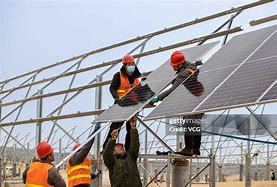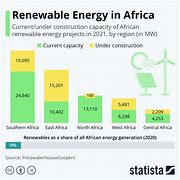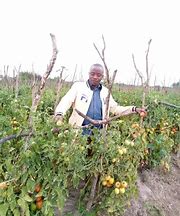Bioenergy, derived from biological sources like crops and organic waste, holds immense potential in Kenya and Sub-Saharan Africa (SSA). In these regions, biomass has long been a primary energy source, but with evolving technologies, there’s a shift towards cleaner bioenergy options. As reported by [www.esi-africa.com], the Kenyan Ministry of Agriculture highlights the vast untapped bioenergy potential that could not only satisfy domestic energy demands but also establish the nation as a regional energy hub.
“Kenya has enough unexploited bioenergy potential to position itself as a regional energy hub.”
Renewable resources such as biomass, wind, solar, hydro, geothermal, and biogas play crucial roles in complementing the national energy mix. With 90% of its electricity generated from renewables, Kenya stands out for its green energy initiatives. However, there is room for further exploration to reduce carbon emissions and lessen reliance on fossil fuels.
“…more can be explored and utilised to help Kenya achieve its NDC’s…”
The bioenergy market in Kenya and SSA presents significant opportunities for sustainable development. Abundant agricultural residues and organic waste offer the potential to enhance energy security, reduce greenhouse gas emissions, and drive economic transformation. Vision 2030 guides Kenya’s renewable energy strategy towards clean energy transition with bioenergy playing a pivotal role.
“…bioenergy presents significant opportunities for sustainable development…”
Efforts at institutions like the Technical University of Mombasa focus on studying the viability of integrating bioenergy into regional energy systems. Initiatives like FUELPHORIA aim to convert biogenic residues into viable gaseous and liquid fuels using modern technologies. Addressing infrastructure gaps is essential to unlock bioenergy’s full potential for climate goals and job creation.
Investments in new infrastructure are vital for advancing the Kenyan bioenergy market. Overcoming technological barriers and enhancing policy frameworks to attract foreign investments will be key drivers in this journey towards a greener future.
In both Kenya and SSA, various biological resources serve as rich feedstocks for producing bioenergy:
– **Wood Residues**: Low-value trees from forestry
– **Agricultural Waste**: Crop residues & animal manure
– **Energy Crops**: Jatropha & sugarcane
– **Organic Waste**: Food waste & animal fats
“The Kenyan government aims to decrease traditional biomass usage by shifting towards geothermal & other renewables.”
While traditional biomass currently dominates Kenya’s energy consumption landscape, efforts are underway to transition towards more diverse renewable sources such as geothermal power. The government’s Bioenergy Strategy outlines plans to promote sustainable production through innovation aligned with national renewable priorities.
Global institutions recognize the vast untapped biofuel potential in SSA countries like Kenya. Despite facing challenges such as technological gaps and policy uncertainties slowing down progress in tapping into this valuable resource pool,…
As reported by [www.esi-africa.com],…
**Challenges Ahead:** Implementing full-scale exploitation of available resources faces hurdles like limited technology access,…
To maximize available resources effectively,…
**Key Strategies:** Developing advanced biofuels aligned with transportation needs can revolutionize SSA’s…
In conclusion,…
**References:**
[1] Source: www.esi-africa.com ([LINK](https://www.esi-africa.com/features-analysis/the-viability-of-the-bioenergy-market-in-kenya-and-sub-saharan-africa/))
Attribution: Content retrieved from ESI Africa website.









Leave feedback about this